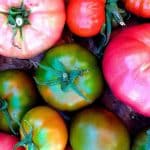History of the Eye Test
When one goes to the optician for a routine eye check, you probably don’t think much about the letter chart on the wall or the various tests performed to ascertain any changes in the quality of your vision. So where did it all begin?
As far back as 1623, Benito Daca de Valdes of Seville describes in his writings that the very first vision tests were based around the patient counting mustard seeds and before that there were references in history to measuring the sharpness of vision by the ability to count double stars.
But the eye test as we know it today was slowly developed back in the mid-1850s when Dutch ophthalmologist Franciscus Cornelis Donders made studies in refraction and accommodation and devised a formula to define “sharpness of vision” in 1861. The real breakthrough came when Donders asked his co-worker and later successor in his opthalmic work, Herman Snellen, to devise a standardised eye test and Snellen published his chart the very next year.
 Snellen used Donders’ formula and the idea that a standard eye could recognise characters from a five foot distance as the basis of his chart, but rather than using the typefaces of the day, he developed his own special character set which he dubbed “optotypes” purely for the purpose of measuring eye performance. He then placed the optotypes into the letter chart format.
Snellen used Donders’ formula and the idea that a standard eye could recognise characters from a five foot distance as the basis of his chart, but rather than using the typefaces of the day, he developed his own special character set which he dubbed “optotypes” purely for the purpose of measuring eye performance. He then placed the optotypes into the letter chart format.
The charts were then calibrated to ensure that they were standardised for use in a five foot arc so that others could reproduce his designs and create their own calibrated charts as standard. Snellen then published a booklet of reading tests in a multitude of languages and ensured that they were calibrated in the same fashion as the distance test. Unfortunately for Donders, the fact that the charts were his idea and his research was used as the basis of their creation, he got no recognition for the Snellen eye test chart.
For over a hundred years, the eye test chart developed by Snellen remained largely unchanged but it wasn’t until 1959 when the original serif font created by Snellen was replaced by a clearer sans serif font. Further changes came in 1976, when it was agreed that there should be now five letters on each line with proportional spacing and a geometric progression.
But despite these minor tweaks, the eye chart created in 1862 would still be recognised by its creators today and is an essential tool in the opticians arsenal. So the next time you are stuck trying to read what the last line of the eye test chart says: you can thank Snellen and Donders for your predicament!















